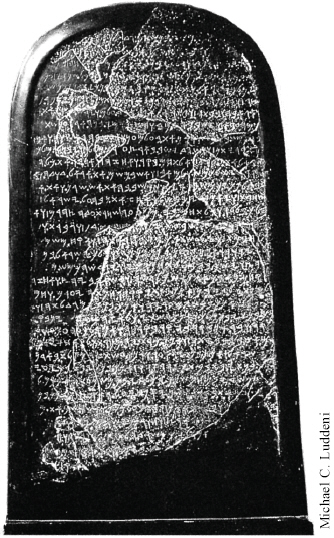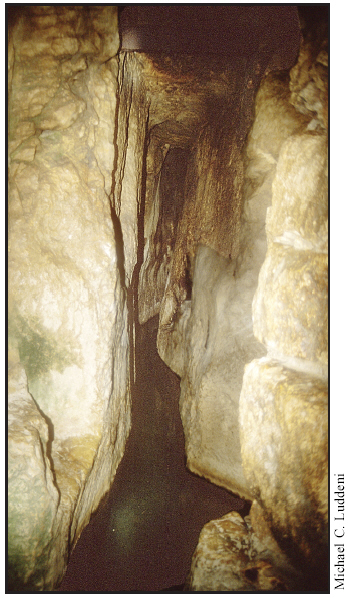Great Discoveries in Bible Archaeology -- By: Anonymous
Journal: Bible and Spade (Second Run)
Volume: BSPADE 16:2 (Spring 2003)
Article: Great Discoveries in Bible Archaeology
Author: Anonymous
BSpade 16:2 (Spring 2003) p. 57
Great Discoveries in Bible Archaeology

The Moabite Stone

In 1868, a German missionary discovered an inscribed basalt monument in Diban, Jordan. The next year, French scholar Clermont-Ganneau came to study it. Realizing its importance, he made an impression of the inscription and then attempted to purchase it. The villagers, assuming there might be treasure inside, heated the stone over a fire and poured cold water on it to break it open. The scholar then tried to purchase as many pieces as possible, eventually recovering about 60 per cent. With the impression he made, Clermont-Ganneau was able to reconstruct the 4 x 2-ft monument, which is now on display in the Louvre Museum in Paris. Called the Moabite Stone, or Mesha Inscription, its script and text date it to the ninth century BC.
The monument describes the revolt of Mesha, king of Moab, against Jehoram, king of Israel, in 846 BC, an event also recorded in 2 Kings 3. Contemporary with Bible times, it uses the same language, terminology and phraseology as the Old Testament. The text mentions Yahweh, the special name for Israel’s God in the Old Testament, the earliest recorded instance outside the Bible. Calling Chemosh the national god of Moab and mentioning three Biblical kings, including David in the phrase “House of David,” and 13 Biblical towns, Mesha’s inscription reads like a chapter from the Bible.
The Moabite Stone vividly demonstrates the authenticity and accuracy of the Biblical text. For more information, see Bryant G. Wood, Mesha, King of Moab, Bible and Spade 9 (1996): 55-64. GAB
Hezekiah’s Tunnel

One of the highlights of a visit to Israel is to walk through the 1, 750 ft long Hezekiah’s Tunnel in Jerusalem. Cut along a winding path through solid rock, it was designed to bring water from the Gihon Spring, outside the city wall, to the Pool of Siloam, inside the wall. American explorer Edward Robinson first traced the tunnel in 1838. Then, in 1880, a boy discovered an inscription carved in the Pool of Siloam end. A dedicatory text, it explains how the tunnel was dug from both ends, with the two groups of workers meeting in the middle. Although Hezekiah is not specifically mentioned, the shape of the Hebrew letters fits his time period, the late eighth century BC. Even more significant, the Bible actually mentions the tunnel as part of Hezekiah’s preparation for the coming siege of the city by the Assyrian king Sennacherib in 2 Kings 20:20 and 2...
Click here to subscribe
